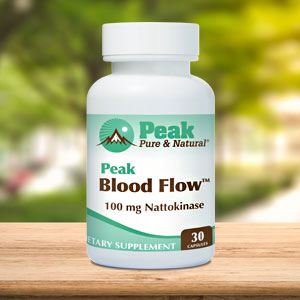Get Easy Health Digest™ in your inbox and don’t miss a thing when you subscribe today. Plus, get the free bonus report, Mother Nature’s Tips, Tricks and Remedies for Cholesterol, Blood Pressure & Blood Sugar as my way of saying welcome to the community!
The stroke danger that masquerades as vision loss

On March 8, 2021, the American Heart Association issued an urgent statement regarding the recognition and treatment of central retinal artery occlusion (CRAO), a rare form of acute ischemic stroke that affects the eye.
“CRAO is a cardiovascular problem disguised as an eye problem,” says Dr. Brian Mac Grory, chair of the statement’s writing committee and a staff neurologist at the Duke Comprehensive Stroke Center at Duke University School of Medicine.
“It is less common than stroke affecting the brain but is a critical sign of ill health and requires immediate medical attention. Unfortunately, a CRAO is a warning sign of other vascular issues, so ongoing follow-up is critical to prevent a future stroke or heart attack.”
Eye stroke: causes and risk factors
Most people think of a stroke as a blockage of blood flow to the brain. But when the central retinal artery becomes blocked, blood flow to the retina slows or stops, and a central retinal artery occlusion (CRAO), or “eye stroke,” occurs.
Usually, the blockage comes from a blood clot. The clot may form in the retina or travel there from another part of the body. The blockage also can happen after a piece of fatty plaque plugs the artery.
If you have a condition that affects the blood vessels, including diabetes, high blood pressure, high cholesterol, or heart disease, it can raise your chances of having an eye stroke.
Other factors that increase your risk include:
- Being 40 or older
- Being a man
- Smoking
- Trauma to the eye
- Damage from radiation treatments
- Kidney disease
- Clotting disorders such as sickle cell disease
- Birth control pills
- Carotid artery disease
- Abnormal heart rhythms like atrial fibrillation
- Vasculitis, an inflammation of the blood vessel wall
- Pregnancy
What does an eye stroke feel like?
An eye stroke is almost always painless, and almost always occurs in one eye. The main symptom is a sudden change in vision.
If a smaller, peripheral artery is blocked, you may experience blurry or distorted vision, to loss of peripheral (side) vision.
But with central retinal artery occlusion, the most common type of eye stroke, you’ll be left with little useful vision. You might be able to see a hand move, but not much more.
Treatment: time is of the essence
Minutes count when it comes to preventing permanent blindness. And, since eye strokes are a warning of future brain strokes, they require immediate medical treatment to lessen damage and possibly prevent future events.
Some research suggests that “clot-busting” drugs used in treating brain strokes may be effective in treating CRAO, but only if administered within 4.5 hours of the first sign of symptoms.
“There is a narrow time window for effective treatment of CRAO and a high rate of serious illness, says Dr. Mac Grory of Duke. “So, if a person is diagnosed in a doctor’s office or other outpatient clinic, they should be immediately sent to a hospital emergency department for further evaluation and treatment.”
How to lower your chances of having an eye stroke
You can’t always prevent an eye stroke, but there are a few things you can do to lower your chances of having one.
- Monitor your diabetes. Work to keep your blood glucose within the optimal range as advised by your doctor.
- Treat your glaucoma. Glaucoma raises the pressure in your eye, increasing the risk of eye stroke. Medicines can help keep the pressure under control.
- Keep tabs on your blood pressure. High blood pressure increases the risk of all types of stroke. Lifestyle changes can make a difference. A variety of effective blood pressure medications are also available.
- Check your cholesterol. If it’s too high, diet and exercise can help bring it down. If necessary, you can take medication to control it.
- Don’t smoke. Smoking can increase your risk of all types of stroke.
Editor’s note: What do you really know about stroke? The truth is, only 10% of stroke survivors recover almost completely, and all doctors can offer is what to do after a stroke occurs. That’s unacceptable considering 80% of strokes are preventable! Click here to discover how to escape The Stroke Syndrome: 5 Signs it’s Stalking You — Plus the Hidden Causes and Preventive Measures You’ve Never Heard About!
Sources:
‘A cardiovascular problem disguised as an eye problem’: Why CRAO requires immediate treatment — Cardiovascular Business
Management of Central Retinal Artery Occlusion: A Scientific Statement From the American Heart Association — Stroke (AHA Journal)
Stroke affecting the eye requires immediate treatment, can signal future vascular events — Eureka Alert
Eye stroke: retinal artery occlusion — Web MD














